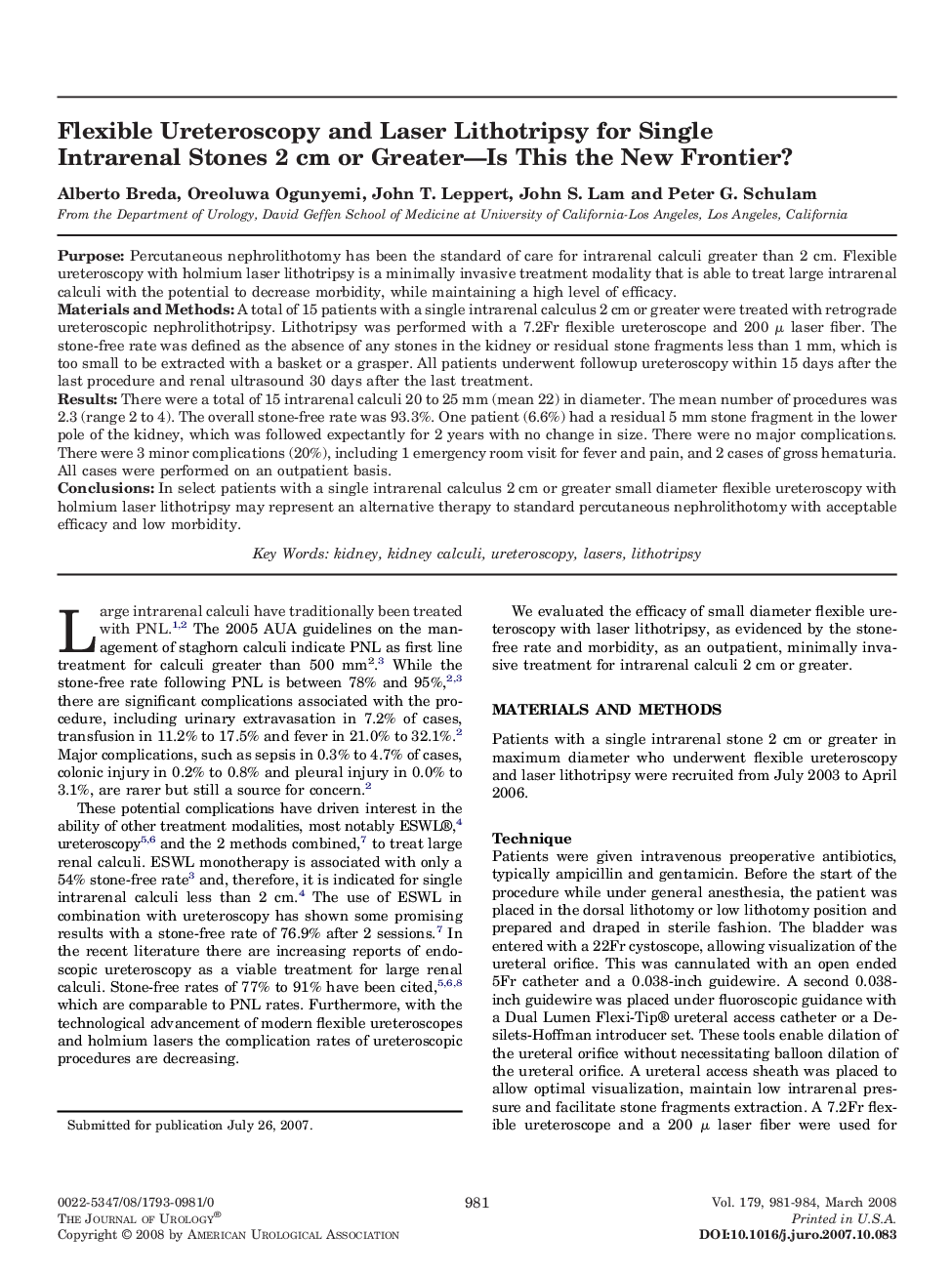| Article ID | Journal | Published Year | Pages | File Type |
|---|---|---|---|---|
| 3873580 | The Journal of Urology | 2008 | 4 Pages |
PurposePercutaneous nephrolithotomy has been the standard of care for intrarenal calculi greater than 2 cm. Flexible ureteroscopy with holmium laser lithotripsy is a minimally invasive treatment modality that is able to treat large intrarenal calculi with the potential to decrease morbidity, while maintaining a high level of efficacy.Materials and MethodsA total of 15 patients with a single intrarenal calculus 2 cm or greater were treated with retrograde ureteroscopic nephrolithotripsy. Lithotripsy was performed with a 7.2Fr flexible ureteroscope and 200 μ laser fiber. The stone-free rate was defined as the absence of any stones in the kidney or residual stone fragments less than 1 mm, which is too small to be extracted with a basket or a grasper. All patients underwent followup ureteroscopy within 15 days after the last procedure and renal ultrasound 30 days after the last treatment.ResultsThere were a total of 15 intrarenal calculi 20 to 25 mm (mean 22) in diameter. The mean number of procedures was 2.3 (range 2 to 4). The overall stone-free rate was 93.3%. One patient (6.6%) had a residual 5 mm stone fragment in the lower pole of the kidney, which was followed expectantly for 2 years with no change in size. There were no major complications. There were 3 minor complications (20%), including 1 emergency room visit for fever and pain, and 2 cases of gross hematuria. All cases were performed on an outpatient basis.ConclusionsIn select patients with a single intrarenal calculus 2 cm or greater small diameter flexible ureteroscopy with holmium laser lithotripsy may represent an alternative therapy to standard percutaneous nephrolithotomy with acceptable efficacy and low morbidity.
